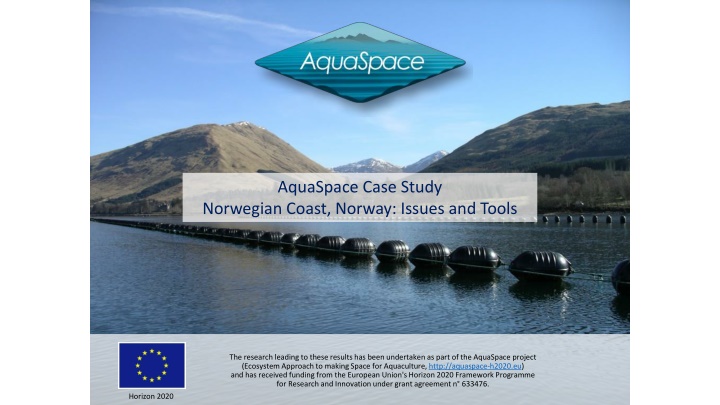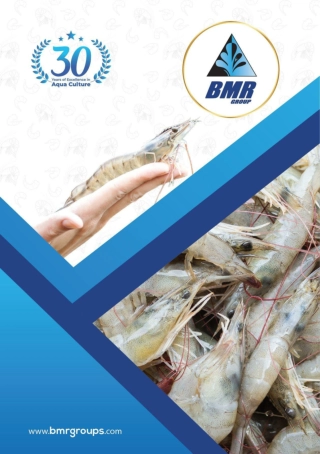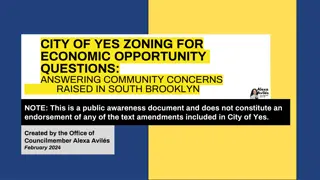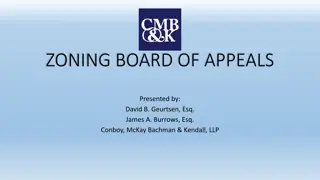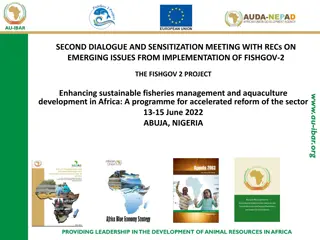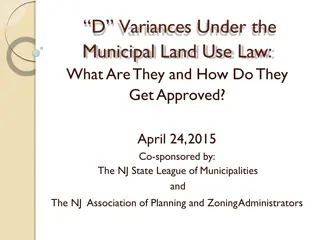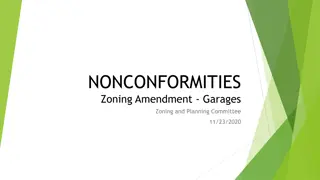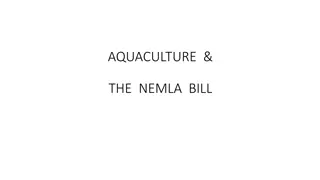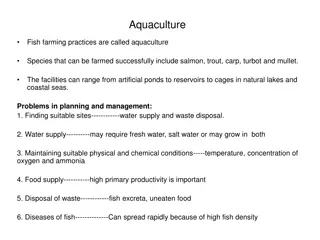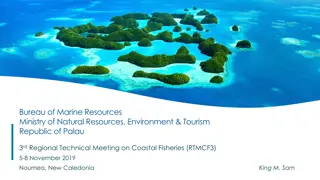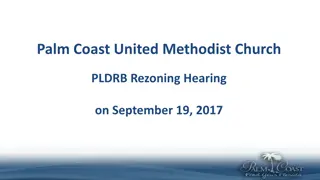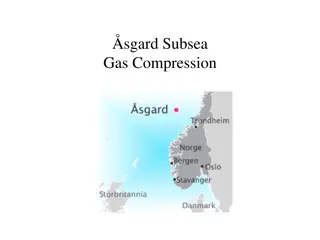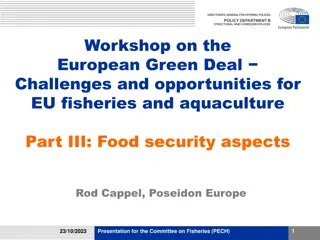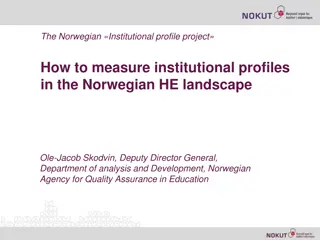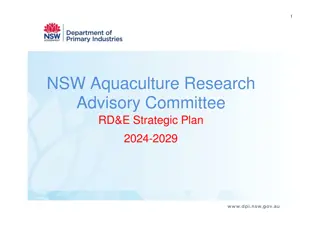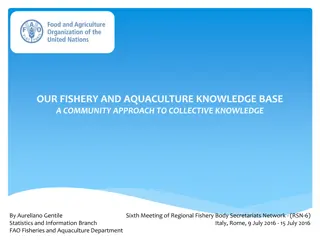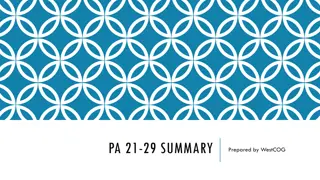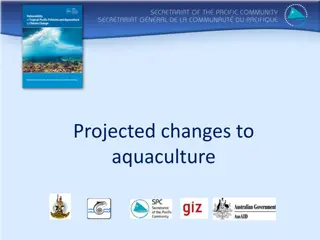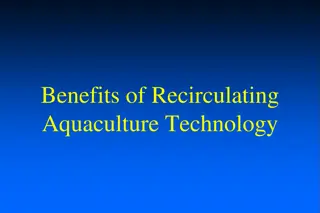Sustainable Aquaculture Zoning Strategies in Norwegian Coast: A Case Study
The AquaSpace project in Norway addresses zoning for sustainable aquaculture growth, focusing on regulating spatial planning for the salmon industry. Utilizing tools like the traffic light system and stakeholder feedback, the case study emphasizes the importance of managing salmon lice impact on wild salmon while promoting environmental sustainability and economic growth.
Download Presentation

Please find below an Image/Link to download the presentation.
The content on the website is provided AS IS for your information and personal use only. It may not be sold, licensed, or shared on other websites without obtaining consent from the author.If you encounter any issues during the download, it is possible that the publisher has removed the file from their server.
You are allowed to download the files provided on this website for personal or commercial use, subject to the condition that they are used lawfully. All files are the property of their respective owners.
The content on the website is provided AS IS for your information and personal use only. It may not be sold, licensed, or shared on other websites without obtaining consent from the author.
E N D
Presentation Transcript
AquaSpace Case Study Norwegian Coast, Norway: Issues and Tools The research leading to these results has been undertaken as part of the AquaSpace project (Ecosystem Approach to making Space for Aquaculture, http://aquaspace-h2020.eu) and has received funding from the European Union's Horizon 2020 Framework Programme for Research and Innovation under grant agreement n 633476. Horizon 2020
Norwegian Norwegian coast coast Relevance to AquaSpace Zoning to regulate spatial planning/allowance for space/production growth of an industry inherent with growth Zoning production regulation based on tools used in a traffic light system as indicator for salmonlice impact on wild salmon
Case Case study study ISSUE ISSUE National zoning for production regulation of the salmon industry based on tools used in a traffic light system as indicator for salmonlice impact on wild salmon Gov. White paper Predictable and environmental sustainable growth of the Aquaculture industry Main sustainability concern is salmonlice impact on wild salmon Sustainability concern of salmonlice impact on sea trout (i) policy-management issues:The Norwegian process is relevant to the Blue Growth policy, advocating the sustainable expansion of aquaculture. - Improved environmental control and management Although Norway is not included by the MSFD, the policy is relevant to that directive. Many of the goals for MSFD is already implemented. (ii) aquaculture-environment issues: Salmonlice is a growing concern regulating spatial planning issues. R&D licences on technology and methods for sustainable solutions. iii) aquaculture-other sector issues: New technology; cage (containment), landbased (RAS) and offshore siting, affects competition for space (iv) economic-market issues: development of new technology affects economy issues, regulated production affects market
Tool(s) used in the case study Tool(s) used in the case study Update on Salmon lice pressure Norkyst800 hydrodynamic model for the entire coastal zone Weekly updated of salmon lice concentration (10 days hindcast avarage) Salmonlice dispersion model Connectivity analysis for fire break positioning Input based on weekly lice counts and monthly salmon biomass Existing industry structure Web based DSS IMR AkvaVis Mapservice (DoF) Next: 2-3 day forecast New web based DSS Barentswatch Tool interactions/overlap Salmonlice dispersion Scotland, UK Nova Scotia, Canada AkvaVis Normandy, France Zhanzidao, China Sungo bay, China Carlingford, Northern-Ireland
Stakeholder feedback and recommendations Stakeholder feedback and recommendations http://www.imr.no/nyhetsarkiv/2015/november/dialog_om_akvakultur/nb-no Industry - strong involvements, support, oppositions and confrontations from industry, public, research , management and politicians The large companies operating in several zones are supporting the production regulations The small companies operationg in on-two zones are more affected and show partly strong resistance to the suggested zoning Research - Debate on methodology and models opposition suggest empirical salmonlice incidence models to be superior to the salmonlice dispersion and connectivity approach Management concern about feasibility to manage the traffic-light system for production regulation
Relevance to Aquaspace Relevance to Aquaspace A national zoning for production regulation affecting allocation of space for aquaculture, using operational tools in a system about to be implemented in management. Industry feedback depends on size and structure. General recommendations; from cancellation to conditioned support with stepwice implementation. Management feedback mainly concern on feasibility to implement
